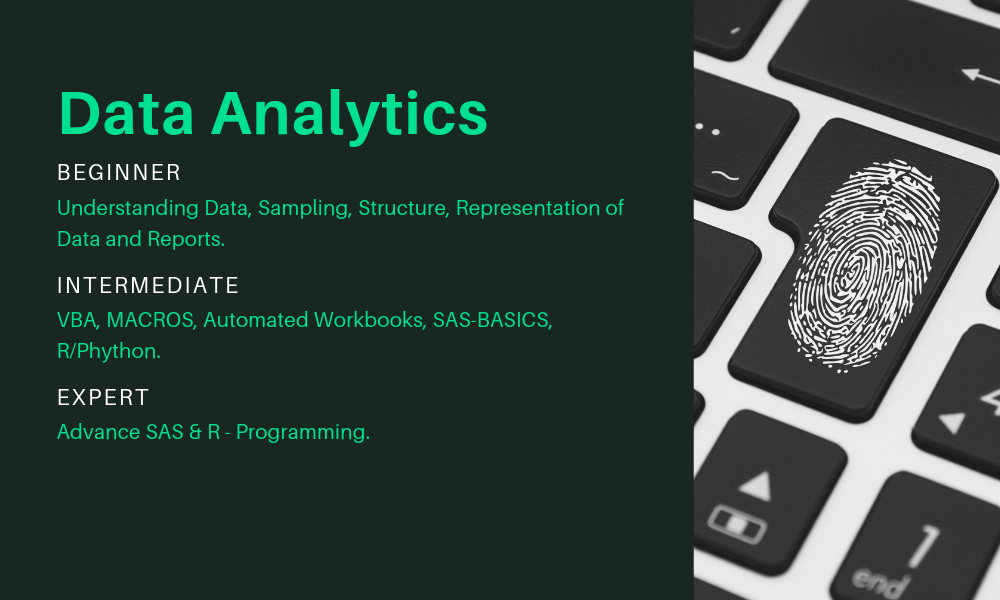Data Analytics
The primary goal of a data analyst is to extract valuable insights and information from data to support decision-making and drive business outcomes. Here are some key goals of a data analyst:
Data Collection and Cleaning: Data analysts aim to collect relevant data from various sources and ensure its accuracy and completeness. They clean and preprocess the data by handling missing values, removing duplicates, and addressing any inconsistencies or errors.
Data Exploration and Analysis: Data analysts perform exploratory data analysis to understand the patterns, trends, and relationships within the data. They use statistical techniques, data visualization, and other analytical methods to uncover insights and identify key factors that influence business performance.
Reporting and Visualization: Data analysts create reports, dashboards, and visualizations to effectively communicate their findings to stakeholders. They present data in a clear and meaningful way, using charts, graphs, and interactive tools to convey insights and facilitate data-driven decision-making.
Business Intelligence and Performance Monitoring: Data analysts play a crucial role in tracking and monitoring key performance indicators (KPIs) to assess the success of business strategies and initiatives. They develop and maintain metrics and dashboards that provide real-time visibility into business performance and help identify areas for improvement.
Predictive Analytics and Forecasting: Data analysts leverage statistical modeling and predictive analytics techniques to forecast future trends and outcomes. By analyzing historical data and identifying relevant patterns, they can make informed predictions that support proactive decision-making and planning.
Data Quality and Governance: Data analysts focus on ensuring the quality, integrity, and security of data. They work with data governance frameworks and establish processes to maintain data accuracy, consistency, and compliance with relevant regulations.
Collaboration and Communication: Data analysts collaborate with various stakeholders, including business teams, IT departments, and executives. They understand the needs and requirements of these stakeholders, translate them into analytical solutions, and effectively communicate complex findings in a non-technical manner.
Continuous Learning and Improvement: Data analysts aim to stay updated with the latest tools, techniques, and industry trends in data analysis. They actively seek opportunities to expand their skills, explore new technologies, and enhance their analytical capabilities to deliver greater value to the organization.
Overview
- Skill level Beginner
- Language English
- Assessments Yes
- Project Yes
- SAS Tool Yes
Learning Outcomes
- LIVE PROJECT End to End Software Testing Training Included.
- Learn Software Testing and Automation basics from a professional trainer from your own desk.
- Information packed practical training starting from basics to advanced testing techniques.
- Best suitable for beginners to advanced level users and who learn faster when demonstrated.
- Course content designed by considering current software testing technology and the job market.
- Practical assignments at the end of every session.
- Practical learning experience with live project work and examples.cv
